Organic Society
 |
 |
 |
 |
 |
 |
 |
The Beginning of the ‘Down-Driving’
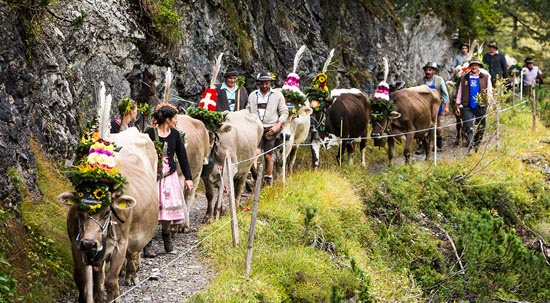
Beginning on September 8 and into mid October, the German peoples in the Alps have processions to bring the cattle and sheep home from their mountain pastures. These "Down-driving" processions are known as Almatrieb or Viehscheid (in Allgäu).
Every region has its own unique traditions for the festive event. The most popular and preferred date to have the Almatrieb is on September 29, the Feast of St. Michael.
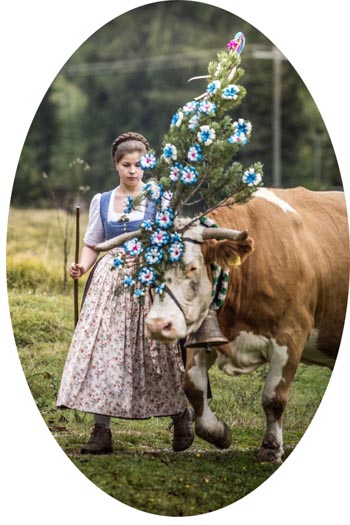
In Bavaria, all of the cows are decorated as brilliantly as the prize cattle. The herdsmen or farmers carefully craft these intricate headdresses weeks before the special day. Traditionally they would begin to craft these headdresses on St. Bartholomew's Day, August 24.
Following the prize cattle come the rest of the herd bedecked with simple greenery on their horns; the bells around their necks echoing throughout the surrounding countryside. Each cow has a different sounding bell according to its rank in the herd. The bells were traditionally meant to drive away the demons and evil spirits, to insure a safe journey for the cattle.

The herdsmen join with the cattle in producing jubilant sounds by singing their ancient songs, cracking great whips and yodeling. The whole village waits with joyful expectation to greet the colorful procession.
In Berchtesgaden, the herd-girls construct for their lead cattle a particularly beautiful headdress, which is a two-tiered crown made of colorful shaved bark. The herd girls with their animals are ferried across the Alpine Lake known as the Königsee on flower bedecked boats.
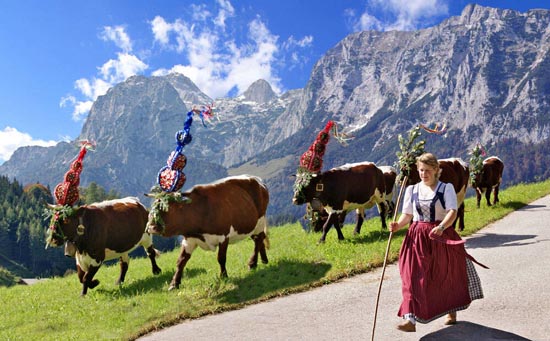
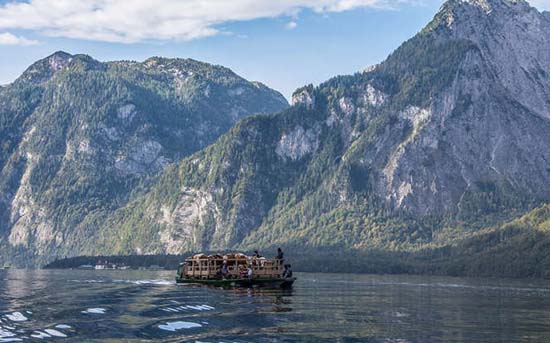
This ancient procession has great significance to the Alpine peoples since the cattle are the source of their livelihood. There is such esteem for the farmers who own the cattle and the herdsmen who care for them that if either farmer or herdsman dies during the summer, the Almatrieb (dow-driving) takes on a somber air. To express that sorrow, the cows are draped in mourning wreaths of black or purple crepe, and the procession passes on its way silently down the mountain side.
Once the animals are safely home for the winter, the farmers' families share a large meal with the herdsmen, a gesture of gratitude for their safe care of the livestock. The night is filled with feasting, singing and dancing. In some areas, it was traditional to give the milk obtained on the day of the Almatrieb as well as the leftover food from the feast to the poor in honor of Our Lady.
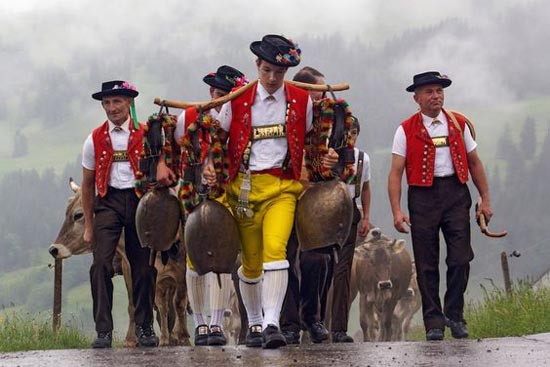
German peasants from the Black Forest had a tradition similar to that of their Alpine neighbors, except that horses were their prized animal. Peasants in the Black Forest area brought their horses into the town of St. Margen on the feast of the Nativity of Our Lady to have them blessed by the parish priest.
As the people made their way to the church, they formed a procession. The men and women dressed in their finest bright regional costumes, and the horses were adorned with polished brass, bundles of flowers attached to their harnesses, and ribbons woven into their manes and tails.
These customs show how the Catholic spirit of a people can transform normal tasks into a marvelous display with festive customs. In those days, when man was closer to nature and the Church imbued her spirit into every class of people – lowest to highest – the seasonal labors had a charm and beauty that made a reflection of Heaven upon earth. Charming festivals like the Down-Driving broke the mundane pattern of life in a natural and sound way.
By contemplating the cattle dressed in their headresses and the long journey down, the Catholic man of the past would have innately understood what they represented on a deeper level. It was a way to transcend the practical and enter a higher sphere with something as simple as driving the livestock down the mountain to their winter home.
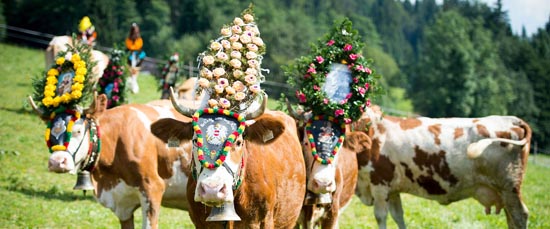

Posted September 24, 2021
Organic Society was a theme dear to the late Prof. Plinio Corrêa de Oliveira. He addressed this topic on countless occasions during his life - at times in lectures for the formation of his disciples, at times in meetings with friends who gathered to study the social aspects and history of Christendom, at times just in passing.
Prof. Plinio
Atila S. Guimarães selected excerpts of these lectures and conversations from the transcripts of tapes and his own personal notes. He translated and adapted them into articles for the TIA website. In these texts fidelity to the original ideas and words is kept as much as possible.
______________________
______________________






